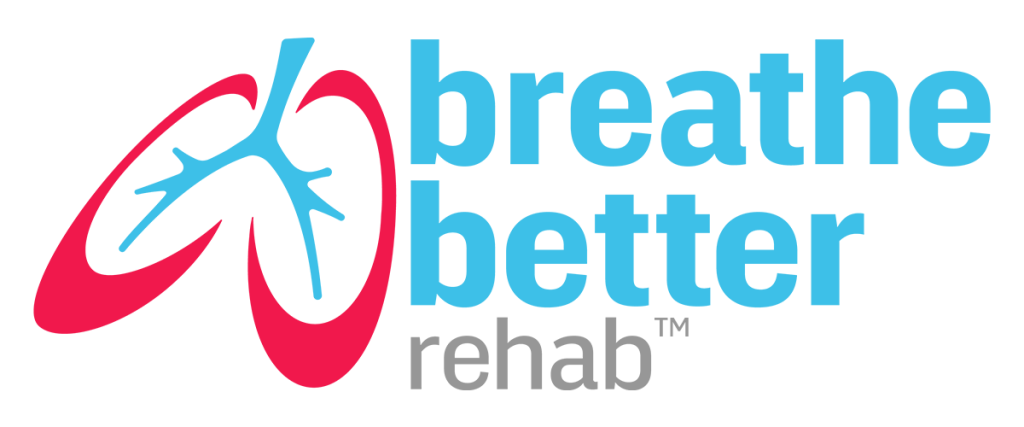Provider Learn More
Learn More, Refer A Patient, and get in contact with the Clinical Liaison.
Telehealth Pulmonary Rehabilitation Supporting Data
Results
Two hundred sixty-six individuals with COPD were included in the analysis. The proportion of responders was not different between center-based pulmonary rehabilitation and home-based telerehabilitation at either end rehabilitation or 12-month follow-up for any outcome (range, 39%-62%). In a binary logistic regression analysis, baseline outcome values, but not participant demographic characteristics, were associated most commonly with responder status. The relative risk of program noncompletion in the center-based group was nearly 4 times greater than for telerehabilitation (center-based pulmonary rehabilitation: n = 79 [58%] vs home-based telerehabilitation: n = 116 [90%]; relative risk, 3.89; 95% CI, 2.28-6.63).
Interpretation
In this study, responder status to pulmonary rehabilitation was not different between center-based and home-based telerehabilitation. The ability to identify patient characteristics that confer greater potential for rehabilitation response or better suitability for a particular model of rehabilitation remains a challenge.
COPD: ORIGINAL RESEARCH Articles in Press November 08, 2024
Abstract
Several different applications of telehealth technologies have been used in the care of respiratory patients, including telemonitoring, teleconsultations, tele-education, and telehealth-pulmonary rehabilitation (PR). Telehealth technology provides an opportunity to assist in the management of chronic respiratory diseases and improve access to PR programs. While there is inconclusive evidence as to the effectiveness of telemonitoring to reduce healthcare utilization and detection of exacerbations, teleconsultations have been shown to be an effective means to assess patients’ disease prior to the initiation of PR, and telehealth PR has been shown to be as effective as institution-based PR at improving functional exercise capacity and health-related quality of life.
Chronic Respiratory Disease. 2017 Aug 8;15(1):41–47.
doi: 10.1177/147972317724570
Abstract
Pulmonary rehabilitation is recommended to restore chronic obstructive pulmonary disease (COPD) patients’ abilities to the highest level of independency and functionality. Telehealth has the potential to improve rehabilitation programs and to enhance patients’ participation. However, little is known about the potential benefits of using telehealth in providing rehabilitation for COPD patients at home. The purpose of this review was to provide a narrative synthesis of literature of studies, which use telehealth with video components to provide real-time pulmonary rehabilitation for COPD patients. An electronic database search was performed in the Ovid Medline, CINAHL, and PubMed databases. Seven eligible studies were included based on the inclusion criteria. Based on the included studies, using telehealth to provide real-time interactive pulmonary rehabilitation for COPD patients at home is feasible and acceptable, and can provide clinical and social positive benefits. A knowledge gap regarding feasibility, acceptance, and benefits of using telehealth to provide real-time pulmonary rehabilitation services still exists.
Saudi J Med Med Sci. 2016 Aug 11;4(3):164–171.
doi: 10.4103/1658-631X.188247
Abstract
For patients with chronic obstructive pulmonary disease, a home-based, interactive telehealth program can improve accessibility to pulmonary rehabilitation and reduce travel costs.
Federal Practitioner. 2019 Sep;36(9):430–435.
As Safe and Efficacious as Center-Based Pulmonary Rehabilitation
Pulmonary rehabilitation (PR) improves exercise capacity, quality of life, and psychological well-being and reduces dyspnea and health care use.1,2 However, despite these benefits, the availability and accessibility of PR facilities for patients with chronic respiratory diseases are very limited. A recent US study reported only approximately 4% of patients with COPD are likely to have access to PR.3 Barriers to access PR are multifactorial, including poor socioeconomic status, long-distance travelling, lack of adequate funding, lack of reimbursement, and limited insurance coverage for PR.1,4,5
CHEST PULMONARY – EDITORIAL Articles in Press 100111 October 01, 2024
Background
Given limited access to center-based, in-person pulmonary rehabilitation (PR), alternative delivery strategies are needed.
Research Question
We compared a virtual PR program with a conventional center-based one with respect to safety, feasibility/acceptability, and geographic catchment (primary outcomes). We explored efficacy by examining changes in functional outcomes (secondary outcomes).
Results
A total of 120 (52 in-person and 68 virtual) patient enrollments were examined; 84% had COPD. Mean age, FEV1 and FVC % predicted, and baseline 6-min walk test distance were similar between groups. For safety, the overall rate of PR-related adverse events was 1.2 per 1,000 person-days of observation, with no between-group differences. For feasibility, the average number of exercise classes completed (12.4 ± 6.2 vs 13.0 ± 6.1) and proportion completing ≥ 70% of classes (61.5% vs 67.6%) was comparable between in-person and virtual groups, respectively. For acceptability, among those who completed the virtual PR feedback questionnaire (n = 30), 100% felt safe exercising at home, 97% endorsed clear internet connection, and 90% agreed education sessions were easy to understand. For geographic catchment, patients in virtual PR lived farther (median, 34.1; interquartile range, 16.6-45.1 vs median, 10.3; interquartile range, 5.6-20.6 miles, P < .001) and had longer drive times (mean 86.0 ± 31.6 vs 51.4 ± 31.9 min, P < 0.001) than patients in in-person PR. In the subset with both intake and exit evaluations, similar improvements were observed in functional outcomes and dyspnea in both groups.
Interpretation
Two-way audiovisual teleconferenced PR is safe, feasible/acceptable, and significantly expands geographic catchment.
CHEST PULMONARY – EDUCATION AND CLINICAL PRACTICE: ORIGINAL RESEARCH Articles in Press 100089 July 29, 2024
Results
Out of 821 studies, only 6 studies met the inclusion criteria. The findings showed that mHealth technologies have good acceptance among patients and healthcare providers in managing sarcoidosis symptoms, such as fatigue, stress, and physical activity levels, and improving quality of life. Also, activity tracker technology, alone or in combination with other remote monitoring tools, increases exercise performance, reduces fatigue, and allows for continuous monitoring of the disease status. Hence, it has the potential to be integrated into long-term care programs for patients with sarcoidosis. In addition, telerehabilitation technology could be an acceptable option for patients, but its effectiveness in improving exercise capacity and quality of life in patients with sarcoidosis requires further investigation.
Conclusion
mHealth and activity tracker technology showed promising results in improving sarcoidosis management and increasing patients’ motivation and adherence to treatment, but further studies are required to assess the effectiveness of telerehabilitation. Overall, telehealth has significant potential to improve the care of sarcoidosis patients, but further research is needed to evaluate the effectiveness of these technologies.
Interpretation
Two-way audiovisual teleconferenced PR is safe, feasible/acceptable, and significantly expands geographic catchment.
BMC Pulmonary Medicine volume 25, Article number: 115 (2025)
In conclusion, telehealth interventions have the potential to revolutionize COPD management by improving access to care, enhancing patient engagement, and optimizing healthcare delivery. While challenges exist, such as ensuring the quality and security of telehealth platforms and addressing technical and knowledge gaps, collaborative efforts between healthcare providers, technology developers, policymakers, and patients are essential to harnessing the full benefits of telemedicine in COPD care. Continued research, innovation, and investment in telehealth infrastructure are crucial to advancing the field and improving outcomes for individuals living with COPD.
April 2024 InterConf
DOI:10.51582/interconf.19-20.04.2024.030
License CC BY-SA 4.0
Conference: 7th International Scientific and Practical Conference «Scientific Trends and Trends in the Context of Globalization»
At: Umeå, Kingdom of Sweden
Results
Forty-eight participants were enrolled, and 40 (83.3%) completed the intervention, n=17 in the C-PR group and n=23 in the V-PR group. Four participants from each group withdrew due to reasons related to health issues (appendicitis, thrush, COVID, back pain) or the health status of their spouse, no-shows, and time constraints. Adherence to the exercise dose (3x/week) and educational offerings were >80% in both groups. Participants in the V-PR group scored the software as having high usability. In both groups, 6MWT distance improved significantly, as did scores on the CAT and SGRQ. No adverse events were reported in either group.
Conclusion
A software-enabled virtual PR program with remote therapeutic monitoring is feasible, usable, and effective. It could offer an alternative model that increases PR uptake for those unable or unwilling to attend in-person, center-based PR.
Int J Chron Obstruct Pulmon Dis. 2025 Jan 31;20:231–241.
doi: 10.2147/COPD.S484558
Discussion
An estimated 14.2 million (6.5%) U.S. adults had physician-diagnosed COPD in 2021. Overall prevalence remained unchanged since 2011. These results are consistent with overall COPD mortality rates, which remained unchanged during 1999−2019 (4). The prevalence of COPD among adults aged <45 years declined from 2011 to 2021, consistent with the trend during 1999–2011 (3). One reason might be the more pronounced decline in prevalence of current smoking among adults aged 18–44 years (36.4% relative decline) than among those aged 45–64 years (22.6%) and those aged ≥65 years (2.1%) from 2005 to 2015 (5); cigarette smoking is the dominant cause of COPD among U.S. adults.††† Explanations for the higher prevalence in COPD among those living in micropolitan and noncore counties might include the persistently high prevalence of smoking among adults in rural areas (6), the lower rates of persons quitting smoking (7), and the increasing proportion of older adults living in rural areas.§§§ The variation in the prevalence of COPD by states is likely related to factors including differences in smoking rates, occupations or industries with higher risk for COPD, and access to health care for screening and detection of COPD (8,9).
Approximately 25% of adults with COPD (3.8 million) reported having never smoked, similar to 1988–1994 (10). In addition to cigarette smoking, secondhand smoke and occupational and environmental exposures are also risk factors for developing COPD among nonsmokers (8). Therefore, promotion of smoke-free environments¶¶¶ and workplace interventions (e.g., raising awareness of harmful work-related respiratory exposures, elimination or substitution of hazardous exposures, and improving ventilation) can help reduce or eliminate COPD-related risk factors.****
Centers for Disease Control (CDC) Weekly / November 17, 2023 / 72(46);1250–1256
Background
Chronic obstructive pulmonary disease (COPD) includes emphysema and chronic bronchitis. COPD is the major component of chronic lower respiratory diseases, which is the fourth leading cause of death in the United States.1 The burden of COPD has continued to rise over the last several decades, especially in select populations such as women and in rural areas.2,3
In 2010, among adults 25 years and older, there were 699,000 (age-adjusted rate of 32.2 per 10,000) estimated hospitalizations for COPD as the first-listed discharge diagnosis, as well as 1,468,000 (age-adjusted rate of 72.0 per 10,000) emergency department (ED) visits for COPD, and 10,291,000 (age-adjusted rate of 494.8 per 10,000) physician office visits.3
The economic costs attributable to COPD in 2010 were estimated to be $32.1 billion and are projected to increase to $49.0 billion by 2020.4 Moreover, 16.4 million days of work lost because of COPD, resulting in $3.9 billion total absenteeism costs, were estimated in 2010.4
Chronic Obstructive Pulmonary Diseases: Journal of the COPD Foundation®
https://journal.copdfoundation.org/jcopdf/id/1209/National-and-State-Estimates-of-COPD-Morbidity-and-Mortality-United-States-2014-2015

